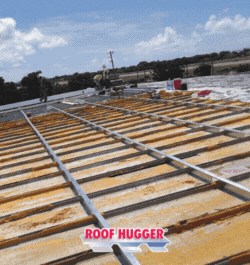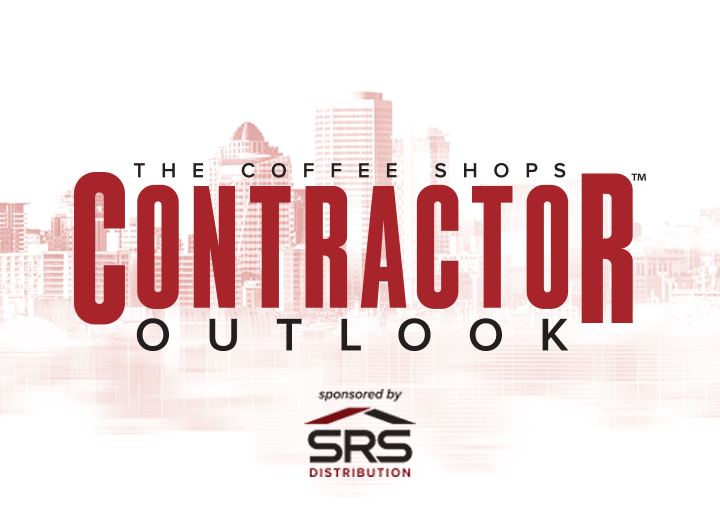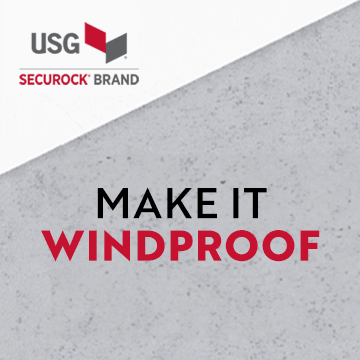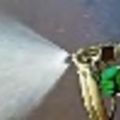How to undertand Multi Component Equipment
« Back To Roofers TalkI am going to try to break down spraying with a multi component pump to break it down simple. Please think of a typical airless sprayer. You have an upper ball, a lower ball and upper and lower packings. This pump can be driven by an Air Motor, Electric motor or Hydraulic pump. As the pump goes up and down the balls move up and down accordingly and then close off on a seat giving a seal. This creates pressure. If one of the balls do not seat, you lose pressure. This can be caused by debris getting in between the seat or the ball sticking to the seat. Simple right?
With a multi component pump (a 1-1 ratio is being used for this writing) you have two of the exact size pumps connected to the one motor making them go up and down at the same time giving both equal ratio and equal pressure. From the two pumps your material goes through two separate Heaters and travels through two separate heated hoses to the spray gun. When pulling the trigger of the gun the two materials meet go through a mixing chamber in gun and come out the front in either a round or flat pattern. When you release the trigger depending on what gun you are using the materials will be blocked from flowing or meeting together and material in the mixing chamber will be blown out by air, pushed out by a rod or cleaned by a squirt of solvent coming from another pump. This again depends on your gun of choice.
In the area your heated hose assembly goes to the heaters you will have a pressure gauge on each heater. Your gauges should read an equal number, say 1,500 PSI at each unit. Sometimes the gauges will be naturally a little off due to failure in mfg or due to viscosity. Let’s say one reads 1,550 PSI and the other reads 1,450 PSI. If those figures stay common on every dual pump stroke most would deem this acceptable.
The A side commonly referred to as Iso is usually the biggest problem creator. The reason for this is Iso reacts with moisture. If any moisture, even vapor gets into you’re A Side drum it will cause a reaction known as crystallizing. This looks very much like mixing a two part epoxy together, letting it cure and smashing it into little pieces. When you’re A side pump travels up and down it can pick up these little chunks. If it does you have a good chance a piece will get stuck in one of your ball areas not allowing the ball to seat. When this happens you will lose pressure on the A side gauge and you will no longer be spraying 1 -1 your gauge on the A side will drop to say 1,000 PSI and your B side gauge will read 2,000 PSI. If this happens you have changed the chemical makeup of the finished product you are spraying. At this time you must remove any material applied when this happened and fix the A side pump (please keep in mind the B Side can pick up debris causing the same effect and give exact opposite readings).
Over a period of time the inner lining of your hose on the A side and create a crystallized skin. As the hose moves around little particles can break loose and flow to the screen on the A side of your gun. As more crystals get to the screen (filter) your gauges again will start an off reading. You will go to say 1,600 on A side and 1,400 on B Side as the screen clogs more your readings will keep changing, A side 1,800 PSI, B side 1,200 PSI and keep changing until all you are spraying is gook. Any material sprayed from the time the gauges went from 1,600 PSI to 1,400 PSI must be removed, you cannot spray good material over bad, you will not achieve adhesion from the non 1-1 material as it will never cure right and will eventually cause a blister of multiple blisters on the surface.
The A Side Iso can also crystallize on your upper pump shaft. When this happens it will slice through you upper packings so you lose your seal. This again can and will cause the pressures to change, this is where you will have to take the A Side pump apart clean the shaft and insert new packings.
Your gun will at some point not seal right and you will have droplets of either A Side or B Side dropping on your surface. As you spray over this it is uncured material which again will blister over time.
It takes a shorter time to fix or prevent these things from occurring then it does trying to fix the substrate later






















